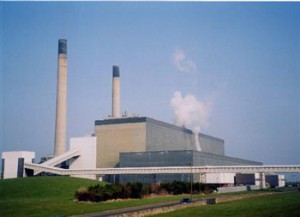
Plans to replace the coal fired power station at Cockenzie in East Lothian with a high efficiency gas station have been approved by ministers.
The Scottish Government says the new 1,000 Megawatt combined cycle gas turbing power station will create up to 1,000 jobs in demolition and construction and 50 full time positions when completed.
Natural gas is a more efficient fuel than coal and ministers claim the new plant will more than halve carbon and nitrogen dioxide emissions compared to the existing power station.
They hope to minimise disturbance in the area during construction and minimise impacts on the environment and on protected species.
The development will aim to use new carbon capture and storage technology, which limits carbon emissions.
However, at a Cockenzie and Port Seeton community council meeting in February this year local residents and councillors voiced their opposition to Scottish Power’s plans for the gas station.
Local councillor Stuart Currie said the proposals were made for commercial reasons, and said the ‘future of Scotland is in renewables.’
Robert Bryson, vice-chair of the community council, said at the time: “The community council is very concerned about these proposals from Scottish Power concerning the future of the Cockenzie Power Station.
“We are not convinced by their argument concerning emissions, the lack of electricity if it is closed down and the promise of further jobs for local people.”
A separate application for a 17.5 km pipeline from the existing gas network at East Fortune to the new power station has also been approved.
Scottish Energy Minister Fergus Ewing said: “Alongside the vast increase in renewable energy that we are working towards, Scotland will still need conventional, clean fossil fuel power to provide a steady supply of electricity. This could be met by new build plant, upgrades to existing plants or a combination of both.
“Cockenzie power station is now over 40 years old. The new gas station will provide a far cleaner source of baseload electricity, with less than half the amount of carbon emissions, creating new jobs in East Lothian and new opportunities for existing Cockenzie staff in the process.
“The Cockenzie development is also designed to utilise the heat produced during the electricity generating process, which could help Scotland further decarbonise its heating sector. I have today published a new study on waste heat that shows it is technically possible to recover significant amounts of heat at large power stations, but that the financial case remains unattractive.
“We will consider how the planning system can best support heat recovery and our Expert Commission on the delivery of district heating, to be established shortly, will look at the recommendations of the study.”
But the World Wildlife Fund Scotland’s head of policy Dr Dan Barlow said: “We are extremely disappointed at this announcement. By not requiring any carbon capture from the start this decision risks locking Scotland into decades of unabated climate pollution and jeopardises the Government’s firm commitment to decarbonise energy supply by 2030.
“The government’s own energy policy shows that Scotland doesn’t need any new gas or coal to keep the lights on. If this poor decision is later followed by the approval of a new coal-fired power station at Hunterston then Scotland can kiss goodbye to any credibility it currently has globally as a leader in tackling climate change.
“Despite the Government’s claims that it wishes to promote the most efficient use of waste heat in generating electricity this proposal provides no firm commitment to actually recover and use any waste heat. A new fossil-fuelled power plant operating at just over 50 per cent efficiency has absolutely no place in Scotland’s power sector.”